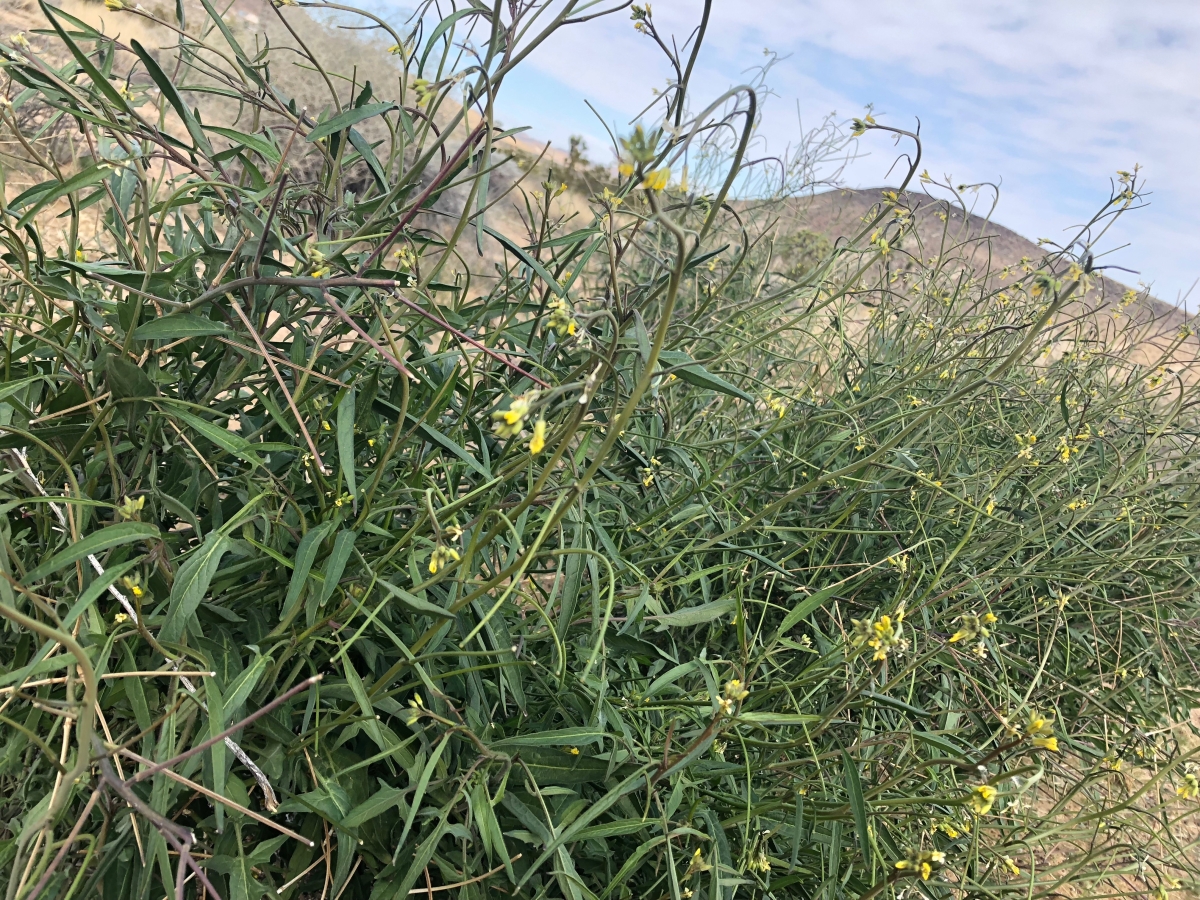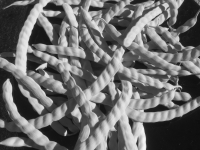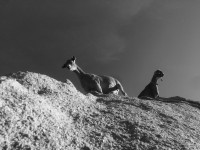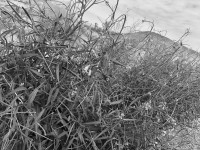Mustard and other weeds

MARCH INGREDIENT: MUSTARD AND OTHER WEEDS
The clichés of spring are all inked in green, the declarative color that seems to grow from scant patches into fully encompassing swathes without warning, even in these arid parts. Despite our unseasonably warm and dry winter, I’m already witnessing a healthy dose of emeralds and limes as infantile leaves cling to the arms of desert almond trees, and generous tufts of wild rhubarb pop up from the sand overnight. One of the most prolific of these early bloomers is mustard, an oft-despised grouping of plants belonging to the same family as kale (Brassicaceae), and lumped into the generic category of “weed.” True, some species of mustard (and there are many) are not native to the area and are classified as invasive—the most condemning of all labels, referring to a species’ tendency to quickly establish itself in a foreign community and crowd out the native plants that actually belong there. But some mustards are actually native, most of them are tasty, and everyone will applaud you for removing these rampant reproducers!
This month we’re featuring weeds, with mustard as the suggested ingredient due to its prevalence in our area. But there are a lot of edible weeds—grasses, thistles, mallow, dandelion, lambs quarters—and if you’re familiar with the ones growing around you, go ahead and experiment.
A weed is just a plant, gloriously oblivious to human desires. In some ways, I can’t think of a position more respectable, than to be a weed.
For more information on HDTK, as well as more information on mustard species you’re likely to encounter in the Joshua Tree area, tips on how to identify them, and other nuggets of info, check out Sarah’s website.
Monday, March 19th at 7pm
Copper Mountain Mesa Community Center
65336 Winters Rd. Joshua Tree, CA
High Desert Test Kitchen (HDTK) is an informal monthly dinner gathering organized by artist Sarah Witt. Participants bring a dish to share that is either made with or inspired by ingredients inhabiting this peculiar span of the North American desert. Exploring the Mojave from a culinary perspective, HDTK naturally intersects with foraging practices and Native American traditions, and inevitably ignites debates concerning ethical human-to-wilderness relationships - hopefully challenging our taste buds too.
From September 2016 to July 2018 Sarah Witt organized High Desert Test Kitchen (HDTK), a monthly dinner gathering at the Copper Mountain Mesa Community Center in North Joshua Tree. Each month a different ingredient was featured with the challenge of incorporating local desert roots, fruits, insects, or a handful of twigs into a culinary repertoire. Participants would bring a dish to share, gathering together to discuss where the ingredients were sourced, the manner in which they were processed, and to consider their EQ (or edibility quotient). To read more about these native ingredients visit Sarah’s website.


















